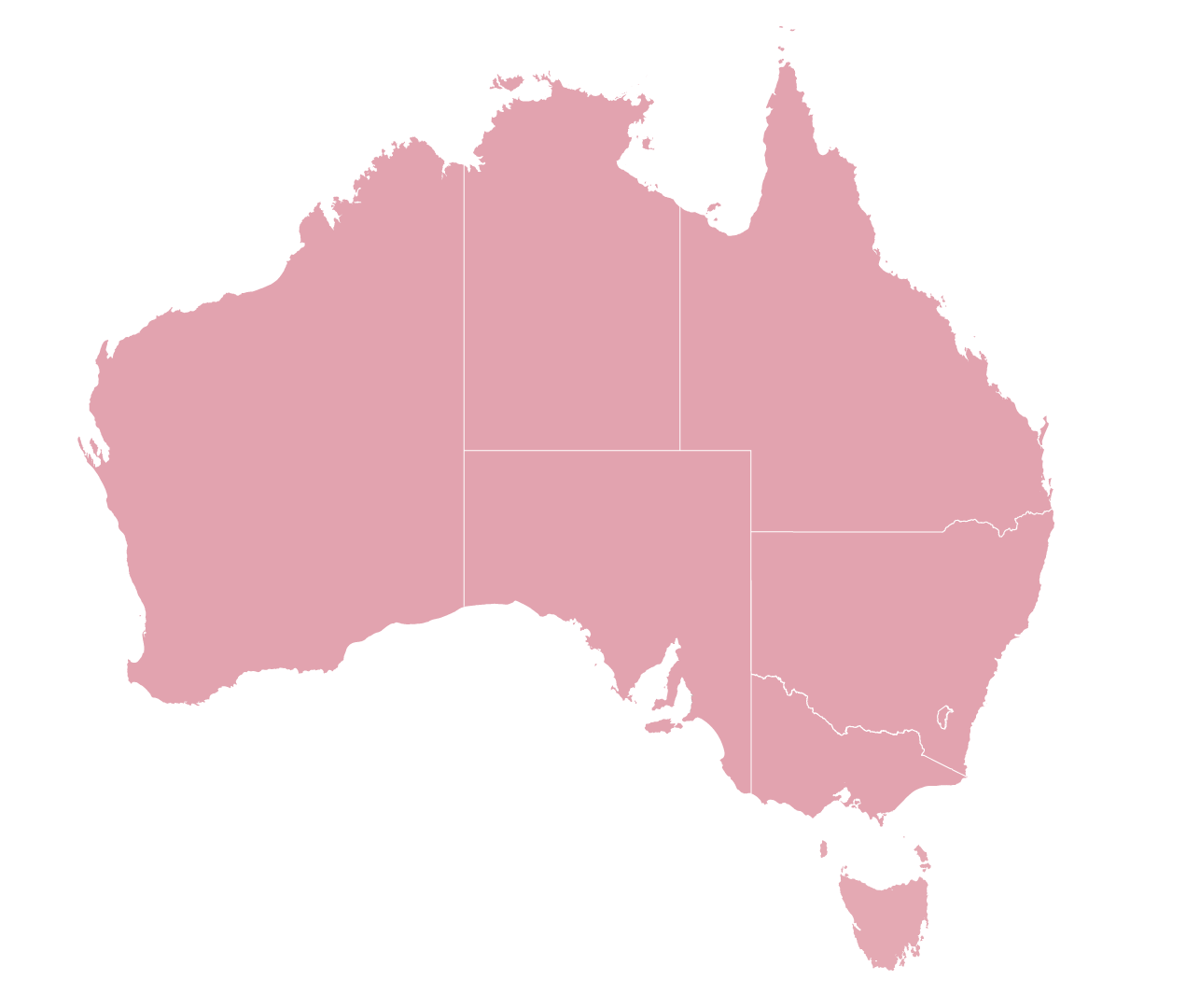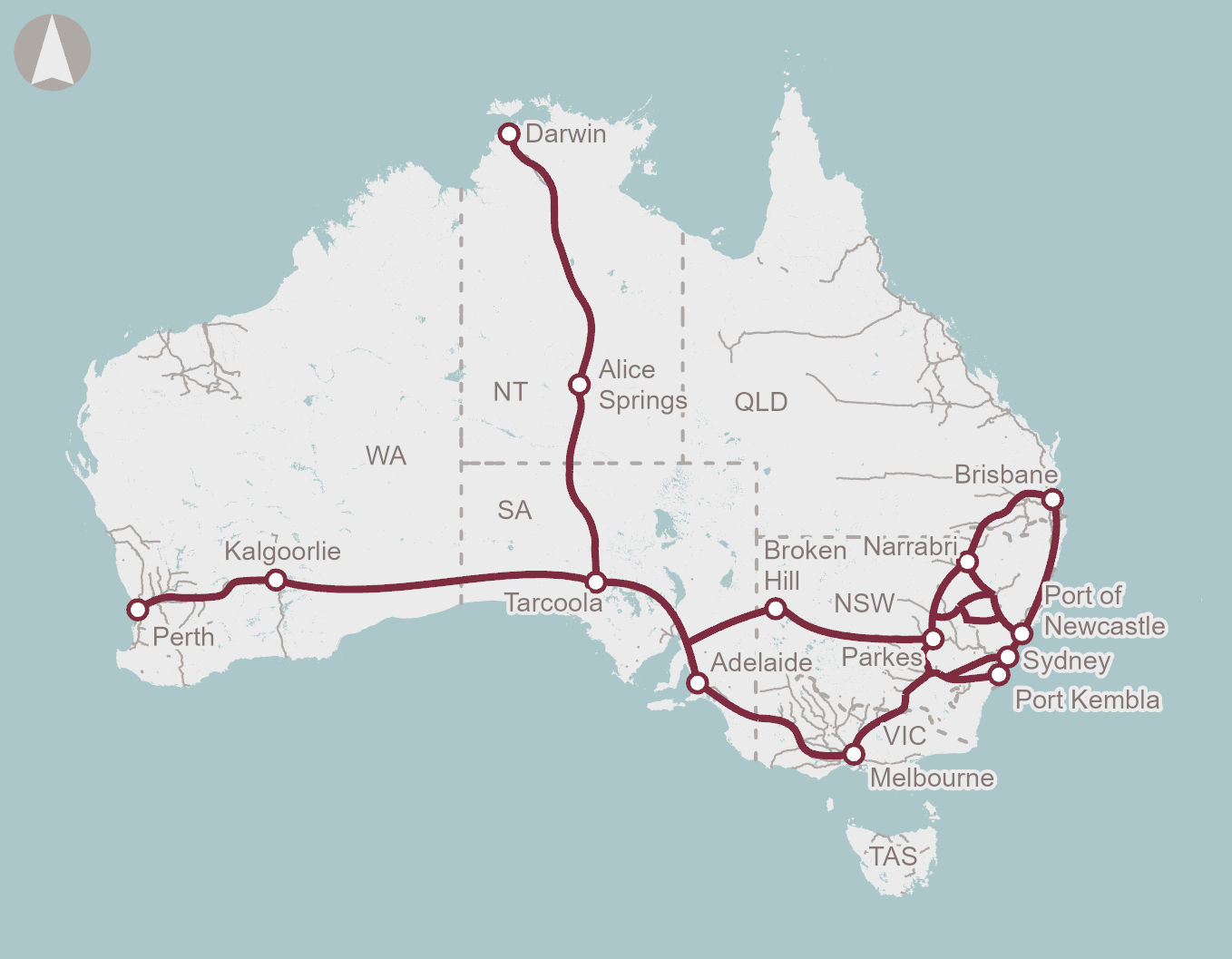

Australia's rail system faces interoperability challenges due to its historical development as separate state-based systems. Jurisdictions have commenced implementation of upgraded digital control systems. An uncoordinated adoption of technology and tailored rules risks new interoperability issues, harming industry competitiveness and productivity.
A nationally coordinated approach to improve the interoperability and harmonisation of Australia’s rail systems is crucial for national productivity and liveability. Interoperability across jurisdictions of Australia’s eastern coast has been identified as the initial priority.
Addressing these challenges is becoming more urgent as the nation’s rail networks will play a pivotal role in reducing Australia’s greenhouse gas emissions and contributing to a sustainable national economy.
Strategic Fit
Addressing rail interoperability challenges aligns with the Australian Government’s Infrastructure Policy Statement, which recommends prioritising investments that improve national productivity, support more efficient supply chains, and improve the safety and sustainability of transport networks. It also aligns with the National Rail Action Plan (NRAP), which seeks to harmonise rail infrastructure and standards, reduce train control systems and grow the rail workforce with nationally recognised skills for high-tech systems.
Additionally, state and territory jurisdictions, the Australasian Railway Association and rail infrastructure managers, operators and suppliers have agreed to consider national rail interoperability ahead of all future network investments and decisions1.
Societal Impact
Rail interoperability will create a safer, more efficient, sustainable, and connected future for Australia’s rail networks by improving the transit experience of passengers, drive a more productive freight sector and support more resilient national supply chains.
Improving the competitiveness of rail is expected to induce a mode shift away from road transport and unlock the cost efficiencies and environmental benefits of rail, and help Australia meet its net zero emissions targets.
A nationwide rollout where all operators are fitted with harmonised infrastructure and follow agreed operating rules is required to fully realise the economic benefits of rail interoperability.
Deliverability
The proposal identifies risks and barriers to harmonising Australia’s rail systems. These include stakeholder coordination, funding alignment across jurisdictions, industrial relations, cost-benefit imbalances and regulatory barriers.
To mitigate against these risks, the proponent intends to establish a robust governance structure to ensure that digital train control systems are delivered consistently and support interoperability. The proponent will also undertake detailed planning for a cost sharing framework. However, scheduling and implementation of digital train control and signalling across networks is contingent on third party investment decisions made by States and rail infrastructure managers.
The National Transport Commission (NTC) is currently facilitating a national policy position for rollout of digital train control systems. The NTC has already developed an options analysis on the policy direction of the proposal.
Infrastructure Australia supports the NTC leading the development of a nationally coordinated approach to digital train control interoperability. The proposal will be guided by decisions through the Infrastructure Transport Ministers Meeting (ITMM) and National Cabinet as the authorising bodies for approvals.
Subsequent activities identified by the NTC include:
- Government commitment to a common interoperable digital signalling technology pathway
- Robust stakeholder engagement and buy-in
- National trackside rollout and rollingstock fitment strategy, including development of a non-urban regional solution in partnership with the Australian Rail Track Corporation (ARTC) and other infrastructure managers
- Governance and coordination for implementation and a cost sharing and funding strategy to support a digital signalling technology pathway
Once an agreed policy position is established, analysis of options to deliver the preferred digital signalling system technology should be undertaken to inform a value for money rollout across the country. Proponent(s) to develop this and future stages of work will need to be identified.


 EVALUATION COMPLETE
EVALUATION COMPLETE




